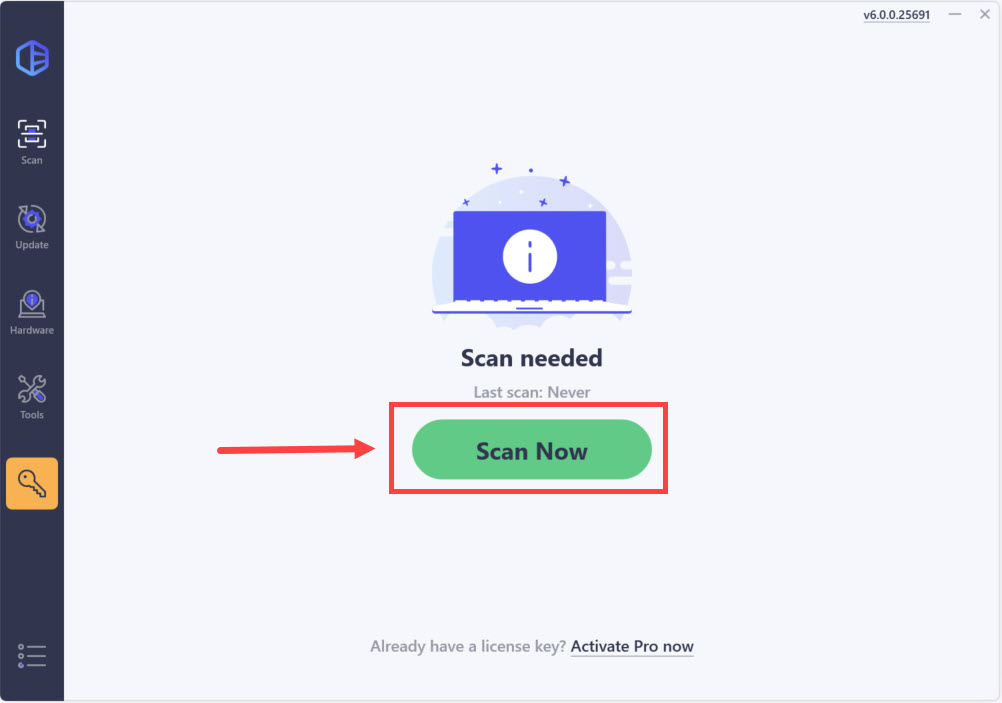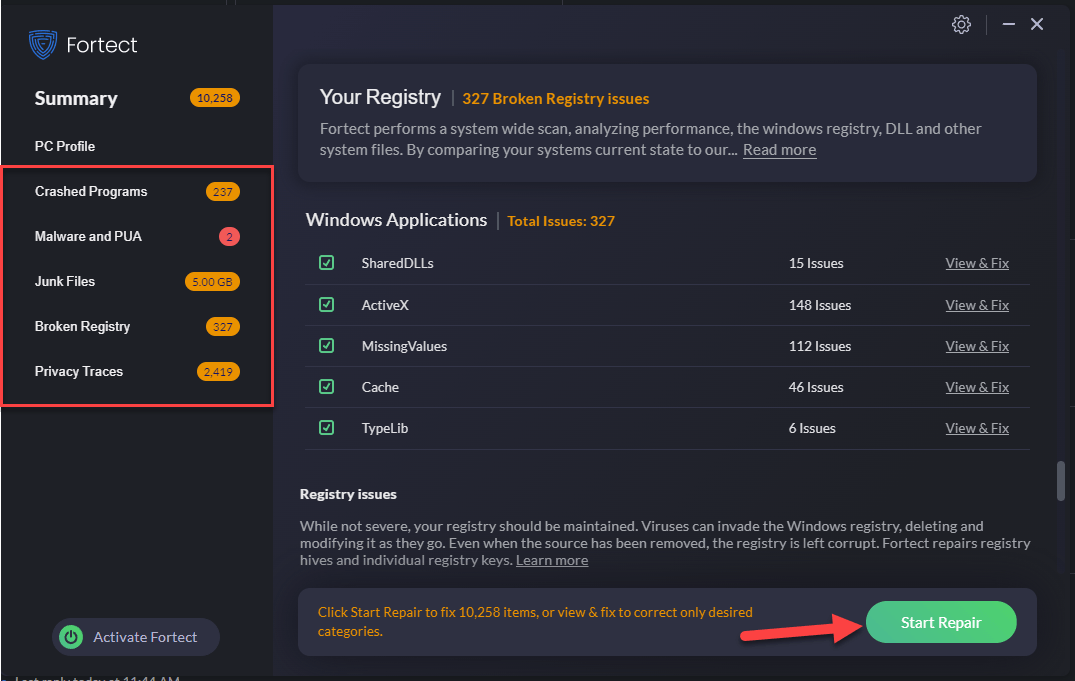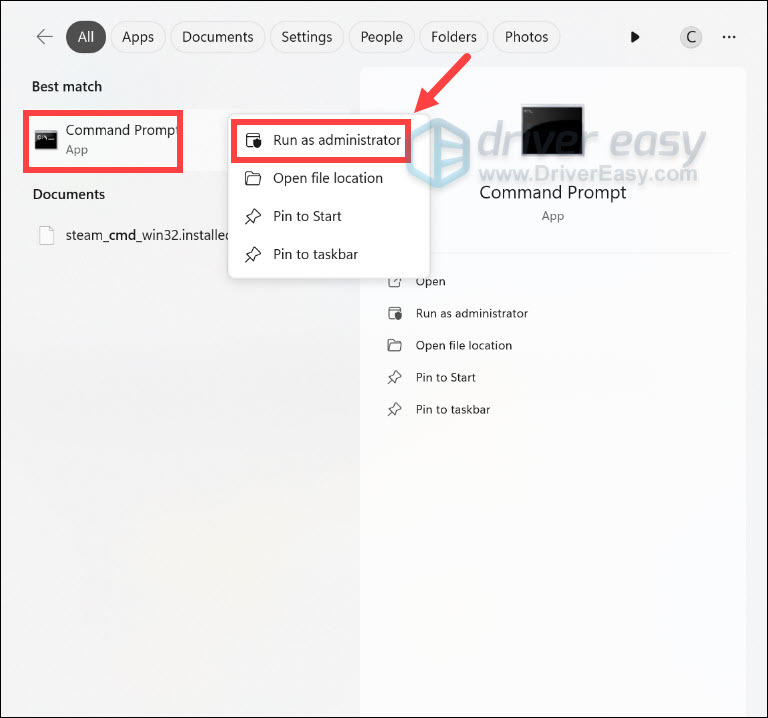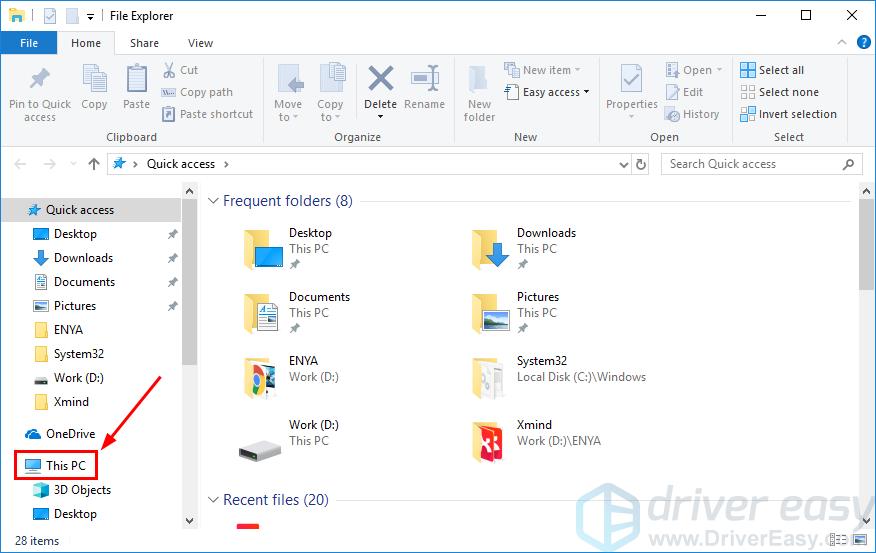
Troubleshooting the Notorious BSOD for USB Drivers in Windows 11 – Solutions Unveiled

Troubleshooting the Fltrmgr.sys Crashing Issue in Windows Systems - Solutions Inside
If you keep getting random blue screens withfltmgr.sys lately, don’t panic. It’s often not hard to fix at all…
Fixes for fltmgr.sys in Windows 10 and 7
Here are five fixes that have helped other users resolve thefltmgr.sys blue screen of error issue.
If you CANNOT log into your computer system, please start from Fix 1 ;
If you CAN log into your computer system properly, however, please start from Fix 2 .
- Enter Safe Mode with Networking
- Update your device drivers
- Repair corrupt system files
- Check disks errors
- Check the crash logs
Fix 1: Enter Safe Mode with Networking
I’m using Windows 10
Make sure your computer is off .
Press the power button to turn on your PC. Then when Windows displays a login screen (i.e. Windows has fully booted), long press the power button to turn it off.
Repeat 1) and 2) until the screen says Preparing Automatic Repair .
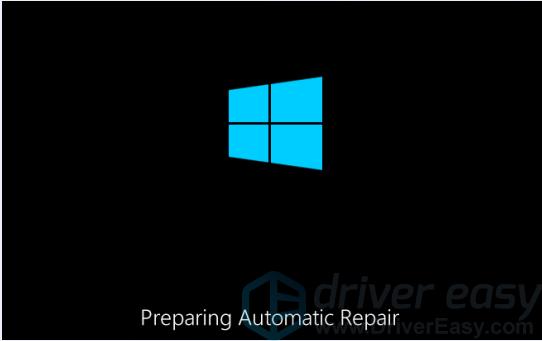
- Wait for Windows to finish diagnosing your PC, and click Advanced options .

- Click Troubleshoot .
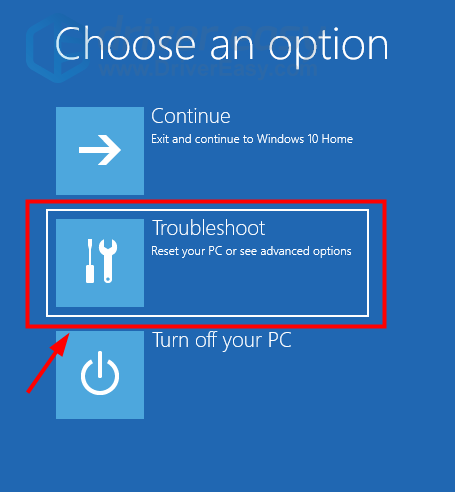
- Click Advanced options .
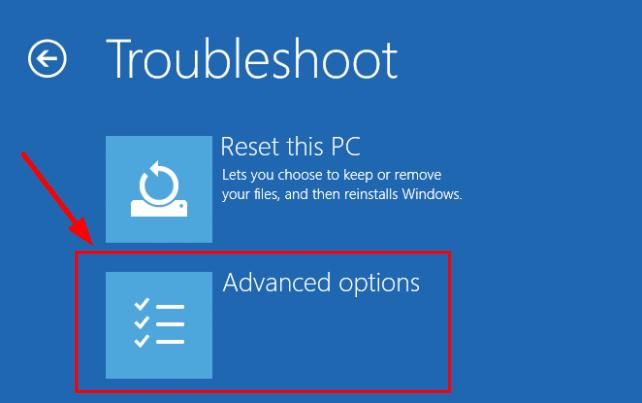
- Click Startup settings .
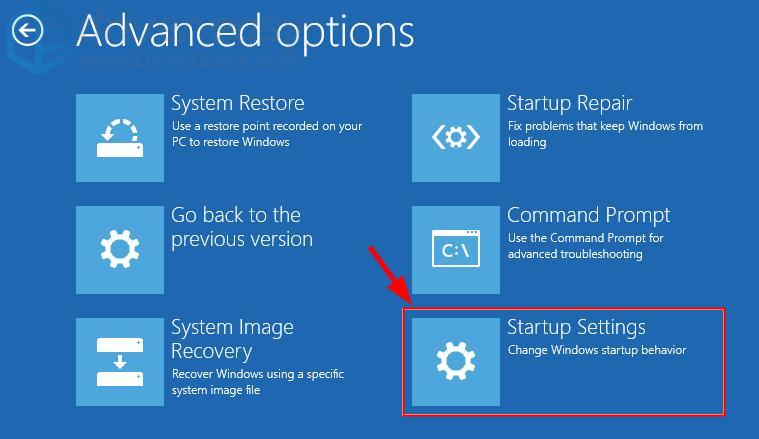
- Click Restart .
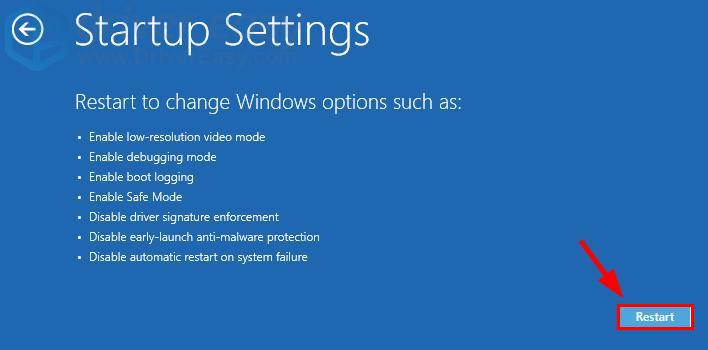
- On your keyboard, press 5 to enable Safe Mode with Networking .
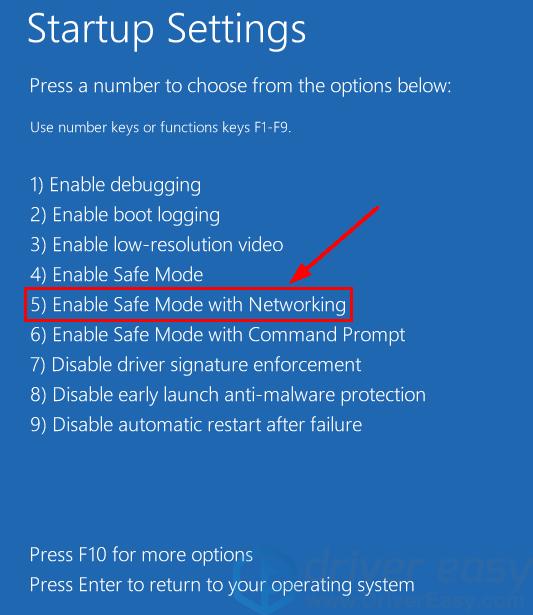
- Now you’ve successfully booted up in Safe Mode with Networking , continue with Fix 2 to troubleshoot the blue screen problem.
I’m using Windows 7
Make sure your computer is off .
Press the power button to turn on your PC and immediately pressF8 at a 1-second interval.
Pressthe arrow keys to navigate toSafe Mode with Networking and pressEnter .
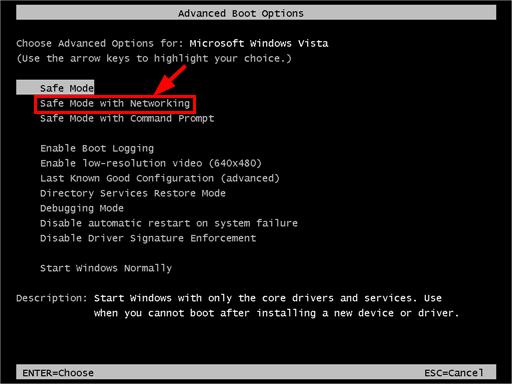
- Now you’ve successfully booted up in Safe Mode with Networking , continue with Fix 2 to troubleshoot the blue screen problem.
Fix 2: Update your drivers
One of the most common causes of this problem is an outdated or faulty device driver. So you should update your drivers to see if it fixes the problem. If you don’t have the time, patience or computer skills to update your drivers manually, you can, instead, do it automatically with Driver Easy .
Driver Easy will automatically recognize your system and find the correct drivers for it. You don’t need to know exactly what system your computer is running, you don’t need to risk downloading and installing the wrong driver, and you don’t need to worry about making a mistake when installing.Driver Easy handles it all.
- Download andinstall Driver Easy.
- Run Driver Easy and click theScan Now button. Driver Easy will then scan your computer and detect any problem drivers.

- ClickUpdate All to automatically download and install the correct version of all the drivers that are missing or out of date on your system.
(This requires the Pro version which comes with full support and a 30-day money-back guarantee. You’ll be prompted to upgrade when you click Update All. If you’re not ready to buy the Pro version, Driver Easy offers a 7-day free trial which includes access to all the Pro features such as high-speed download and one-click install. You won’t be charged anything until your 7-day trial has ended.)
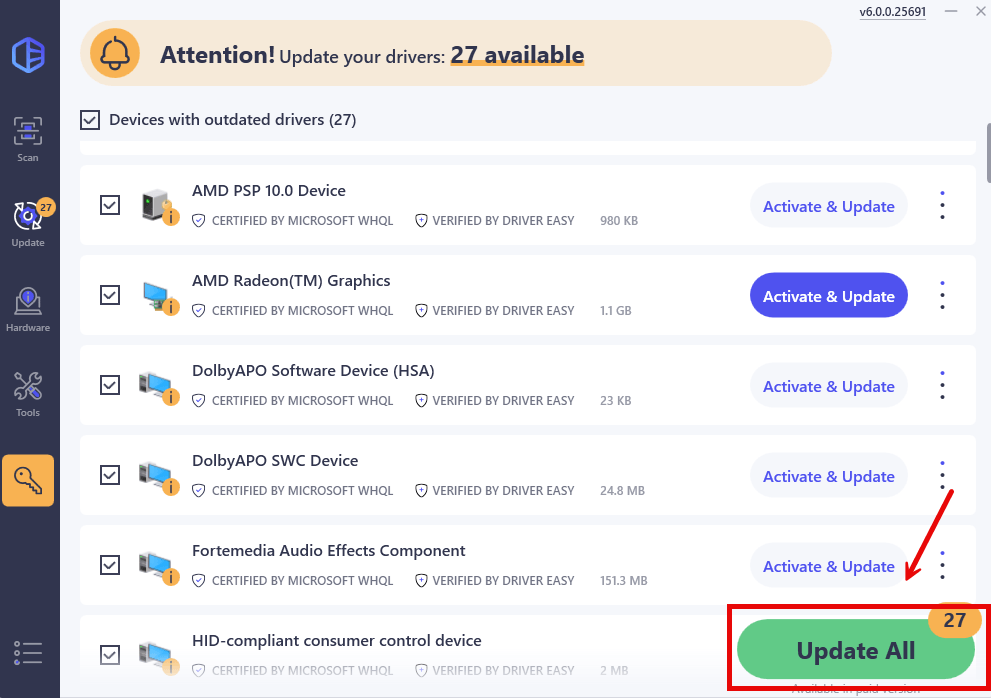
4. Restart your computer for the changes to take effect.
Check to see if thefltmgr.sys blue screen of death issue has been resolved. If yes, then great! If the issue remains, please move on toFix 3 , below.
Fix 3: Repair corrupt system files
The fltmgr.sys blue screen error could be caused by missing, corrupt or damaged system files on your computer. To see if this is the case, you should run a Windows repair.
There are two ways you can repair possible issues with your system files:
Repair & replace corrupt system files with Fortect
Fortect is a tool specializing in Windows repair. With Fortect , the preliminary will scan your computer’s operating system for viruses, malware, and missing, damaged, or corrupt files, then it removes all problematic files found and replaces them with new healthy files. It’s like a clean reinstall of your operating system, except that you won’t lose any user data, and all programs, and settings are exactly as they are before the repair.
Here’s how to use Fortect to run a Windows repair:
- Download and install Fortect.
- Wait for Fortect to run a scan on your PC. The process might take a couple of minutes.
- Once the scan finishes, you will get a summary of the issues found on your computer.

If you need to proceed with the repair function, you’ll be required to purchase the full version.
4. Restart your computer for the changes to take effect.
The full version of Fortectcomes with a 60-day money-back guarantee and full custom support. If you run into any problems while using Fortect, or if it doesn’t work for you, don’t hesitate to contact their support team.
Check your computer to see if thefltmgr.sys BSOD problem has been fixed.
Run SFC scan
System File Checker (SFC ) is a handy feature in Windows that helps scan your system files and repair missing or corrupted system files(including those related to BSOD ). To run the SFC scan :
- On your keyboard, press the Windows logo key and type cmd. Then right-click on Command Prompt and click Run as administrator .

- Click Yes when prompted to confirm.
- In the command prompt window, type sfc /scannow and press Enter .

It’ll take some time for the SFC to replace the corrupted system files with new ones if it detects any.
4. Restart your computer for the changes to take effect.
5. Check your computer to see if the problem has been fixed.
Check your computer to see if thefltmgr.sys BSOD problem has been fixed. If yes, then congrats! If the issue still persists, please move on toFix 4 , below.
Fix 4: Check disk errors
Disk check is a useful in-built Windows tool that scans your hard disk and external drives for errors and fix them.
The disk error scanning takes only a few minutes. But once it detects any errors, the fixing procedure can take HOURS to complete. Make sure you have enough time set aside.
- On your keyboard, press the Windows logo key and E at the same time, then click This PC .

- Right-click on Local Disk and click Properties .
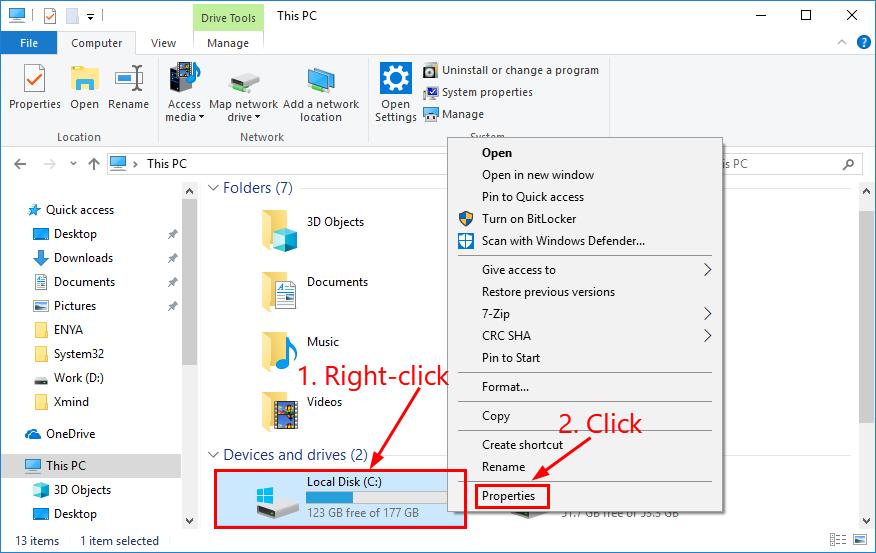
3. Click the Tools tab >Check .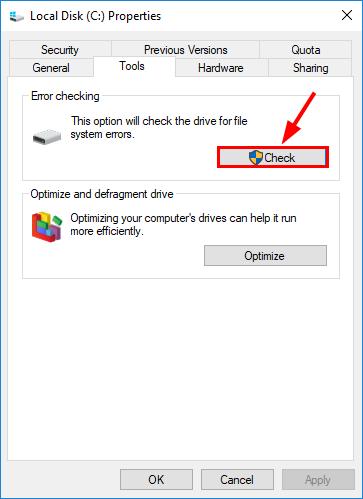
4. ClickScan drive .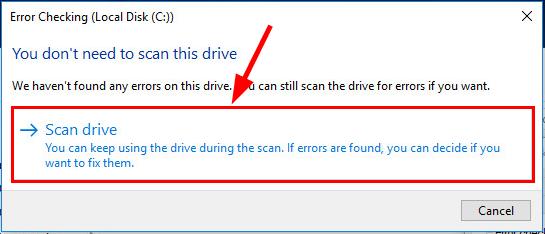
5. Follow the on-screen instructions for Windows to detect and fix the errors found.
Restart your computer and see if it fixes thefltmgr.sys bsod problem. If not, repeat these steps on the other drives on your computer.
Fix 5: Check the crash logs
At this point, if none of the above help, and you’re still inclined to do the troubleshooting by yourself, you can try to analyze the crash logs created by your computer when the crashes happened.
If you’re interested in knowing more about analyzing your crash logs files, please refer to method 2 in this post we have: How to Check Crash Logs on Windows: View Crash Logs with Minidump Files
Hopefully, you have successfully fixed thefltmgr.sys problem by now. If you have any ideas, suggestions, or questions, please leave us a comment below. Thanks for reading!
Also read:
- [New] Perfect Your Photos with Text Tips for Adding Titles in Microsoft Photos for 2024
- [Updated] Capture Curiosity with These 6 Video Categories
- [Updated] In 2024, How to Use Star Feature to Your Advantage
- Activating End Task Bar Functionality in Windows 11
- APC Index Mismatch Bluescreen Woes? Here's How You Can Resolve It!
- Effortless Solutions to Unstuck Windows 1지어 10 Threads From Stubborn Driver Errors
- Fix Windows 10 Thread Stuck in Device Driver Error. Easily!
- In 2024, Bypass iCloud Activation Lock with IMEI Code From your iPhone XR
- In 2024, Dose Life360 Notify Me When Someone Checks My Location On Oppo A58 4G? | Dr.fone
- Tips & Tricks for Dealing with the Notorious Read-Only Memory Writing BluScreen Error
- Troubleshooting Fixes for the Infamous Driver PNP Watchguard BSOD Issue
- Unbeatable Offer on the Alienware Aurora R16 – Get a Free Upgrade to RTX 4070 Super & Save $200
- Unveiling the Ultimate IPhone Selfie Sticks (#8) for 2024
- Title: Troubleshooting the Notorious BSOD for USB Drivers in Windows 11 – Solutions Unveiled
- Author: Brian
- Created at : 2024-10-12 00:06:23
- Updated at : 2024-10-17 18:04:45
- Link: https://blue-screen-error.techidaily.com/troubleshooting-the-notorious-bsod-for-usb-drivers-in-windows-11-solutions-unveiled/
- License: This work is licensed under CC BY-NC-SA 4.0.
